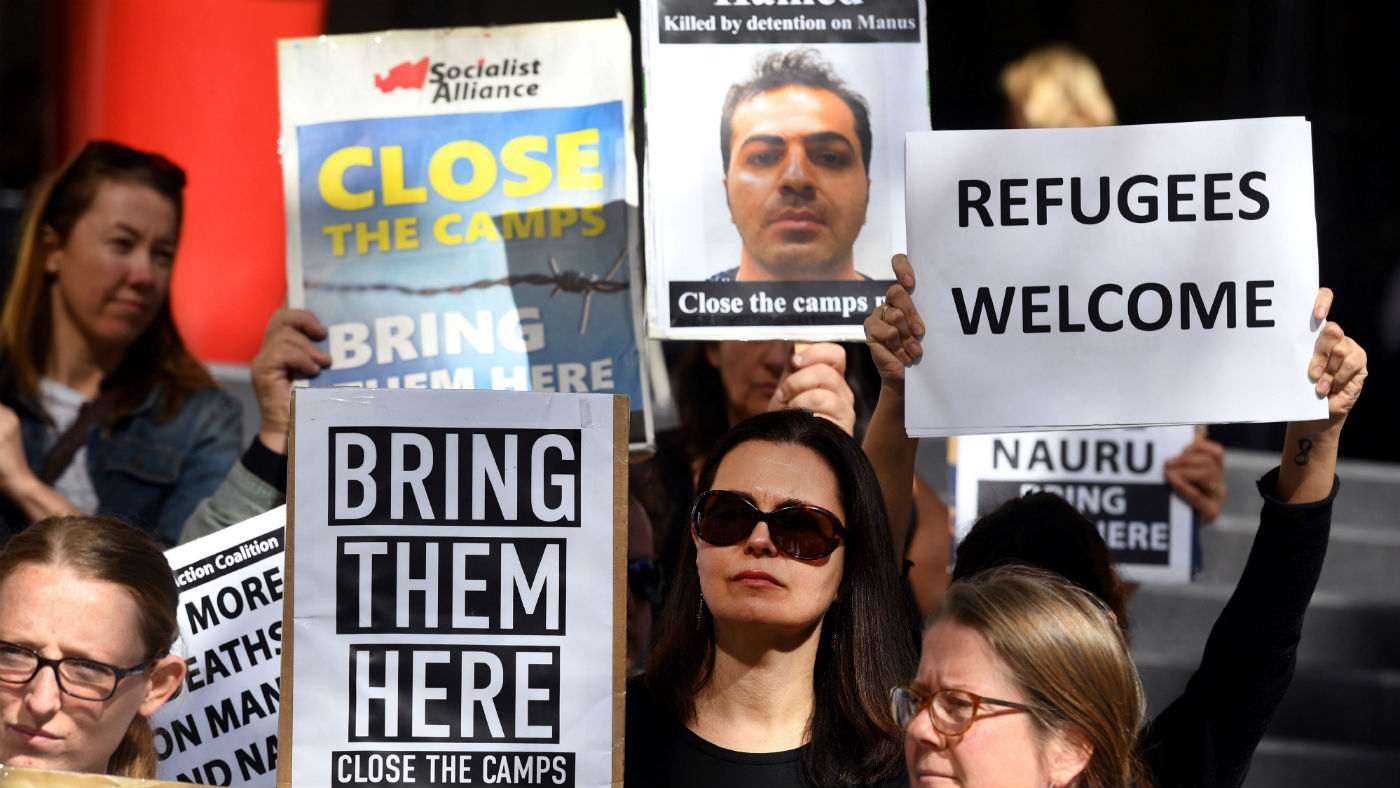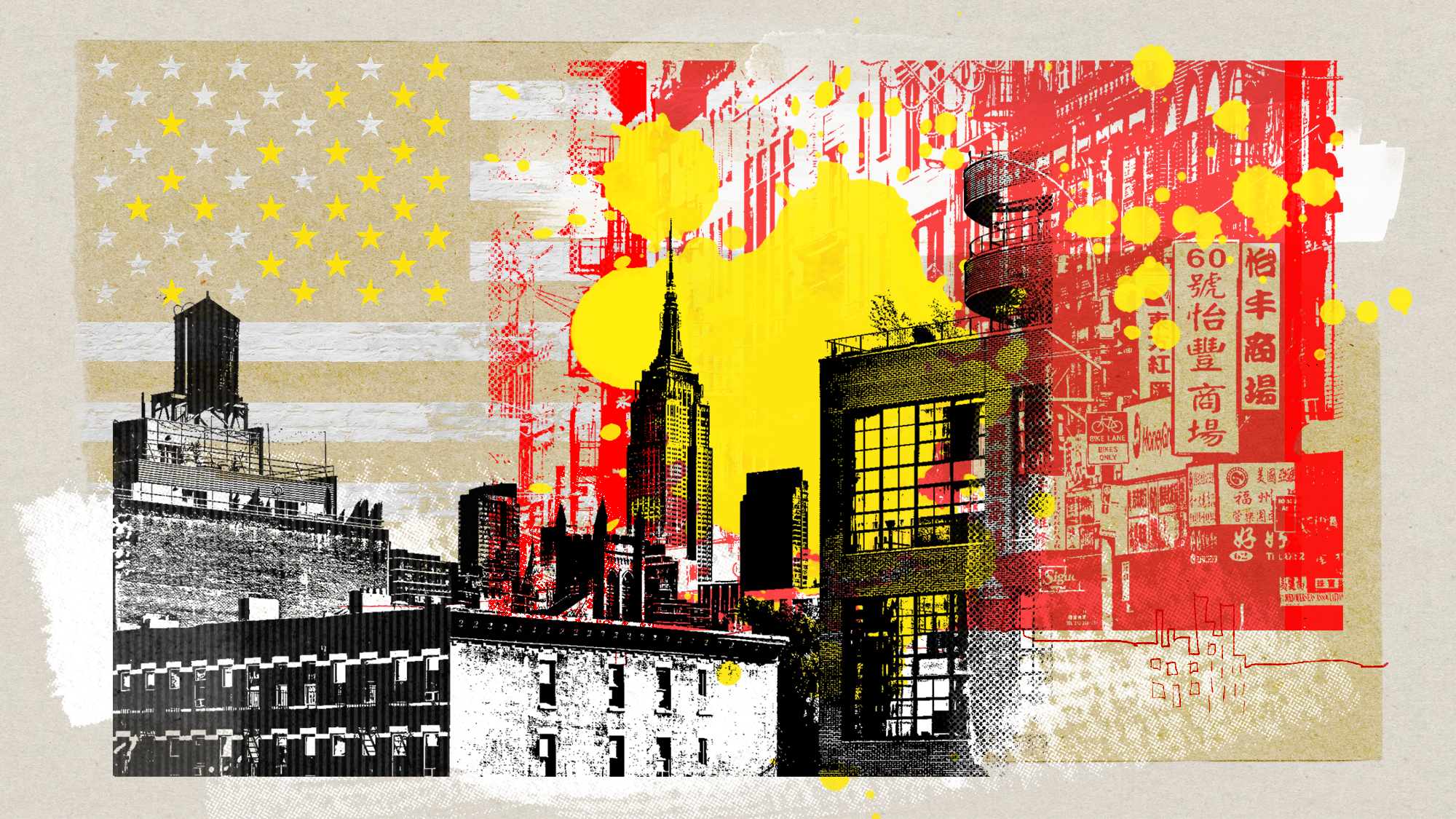Manus Island: Australian refugee centre a ‘powder keg’ ready to explode
Closure of camp pits locals against 700 asylum seekers and shines spotlight on Australia’s immigration policy

Confrontation is looming in Papua New Guinea, where more than 700 men are refusing to leave an Australian immigration processing centre.
What is the problem?
The centre on Manus Island was set to be cleared on Monday, ahead of its formal closure today, but many of the refugees and asylum seekers claim they'll be attacked if they leave the security of the compound's wire fences by locals who don't want them there.
The Week
Escape your echo chamber. Get the facts behind the news, plus analysis from multiple perspectives.

Sign up for The Week's Free Newsletters
From our morning news briefing to a weekly Good News Newsletter, get the best of The Week delivered directly to your inbox.
From our morning news briefing to a weekly Good News Newsletter, get the best of The Week delivered directly to your inbox.
More than 550 refugees and 167 other asylum seekers have been detained on the island for more than a year and half after the Australian government rejected their applications, leaving them in a legal limbo.
Former Manus Island MP Ron Knight told CNN the sudden presence of refugees, all men, from Iran, Sri Lanka, Afghanistan and Myanmar, in a town of just 6,000 people, caused suspicion and conflict. The broadcaster described the situation as a "powder keg" ready to explode.
In August a mass demonstration outside the Commonwealth government offices in Sydney called for an independent inquiry after a fifth man died at the camp.
Since they were first opened, a series of deaths at the detention centres has led human rights organisations to voice serious concerns about the policies and conditions at the camps.
A free daily email with the biggest news stories of the day – and the best features from TheWeek.com
Why do the camps exist?
Canberra maintains detention centres outside its territory as part of a blanket ban on people arriving by boat and settling in Australia.
As well as Manus, which was opened in 2001 as part of the then Prime Minister John Howard's "Pacific Solution," Australia has detention centres on Christmas Island and Nauru in the South Pacific to ensure that refugees and illegal immigrants can be processed without setting foot on Australian shores. Asylum seekers judged to be genuine refugees are resettled in Papua New Guinea, Nauru or Cambodia.
In 2008 the Labor government closed the Manus camp but it reopened in 2012 after a rise in the number of boat arrivals peaked in 2013, carrying more than 20,500 people. Two years later, the government announced that all boat arrivals had stopped.
Where did the boats come from?
Many would-be refugees from countries that include Afghanistan, Sudan's Darfur region, Iraq, Iran, Lebanon, Pakistan, Somalia and Syria paid people smugglers in Indonesia to help them reach the northern coast of Australia, often in unsafe boats. Scores of people are known to have died while making the dangerous journey.
What does Australia say?
The waters between Australia and Southeast Asia are patrolled by the country's navy and coast guards, and boats are often intercepted and "towed back" to Indonesia or elsewhere. In 2013, the government initiated 'Operation Sovereign Borders', putting the military in full control of asylum operations. Despite condemnation from human rights organisations and the international community, polls have continually showed widespread public support for the policies.
Is the detention of refugees legal?
In 2015, the UN refugee agency declared the tow-back policy may breach international law and has repeatedly accused Australia of shirking its obligations to refugees fleeing war and conflict. The Australian Human Rights Commission has also concluded that the detention of the children of asylum seekers causes them physical and mental harm and is a clear violation of international human rights law, the BBC reports.
"The aims of stopping people smugglers and deaths at sea do not justify the cruel and illegal means adopted," the commission's president, Gillian Triggs, wrote in 2015 "Australia is better than this."
-
 Political cartoons for December 14
Political cartoons for December 14Cartoons Sunday's political cartoons include a new White House flag, Venezuela negotiations, and more
-
 Heavenly spectacle in the wilds of Canada
Heavenly spectacle in the wilds of CanadaThe Week Recommends ‘Mind-bending’ outpost for spotting animals – and the northern lights
-
 Facial recognition: a revolution in policing
Facial recognition: a revolution in policingTalking Point All 43 police forces in England and Wales are set to be granted access, with those against calling for increasing safeguards on the technology
-
 Femicide: Italy’s newest crime
Femicide: Italy’s newest crimeThe Explainer Landmark law to criminalise murder of a woman as an ‘act of hatred’ or ‘subjugation’ but critics say Italy is still deeply patriarchal
-
 Brazil’s Bolsonaro behind bars after appeals run out
Brazil’s Bolsonaro behind bars after appeals run outSpeed Read He will serve 27 years in prison
-
 Americans traveling abroad face renewed criticism in the Trump era
Americans traveling abroad face renewed criticism in the Trump eraThe Explainer Some of Trump’s behavior has Americans being questioned
-
 Nigeria confused by Trump invasion threat
Nigeria confused by Trump invasion threatSpeed Read Trump has claimed the country is persecuting Christians
-
 Sanae Takaichi: Japan’s Iron Lady set to be the country’s first woman prime minister
Sanae Takaichi: Japan’s Iron Lady set to be the country’s first woman prime ministerIn the Spotlight Takaichi is a member of Japan’s conservative, nationalist Liberal Democratic Party
-
 Russia is ‘helping China’ prepare for an invasion of Taiwan
Russia is ‘helping China’ prepare for an invasion of TaiwanIn the Spotlight Russia is reportedly allowing China access to military training
-
 Interpol arrests hundreds in Africa-wide sextortion crackdown
Interpol arrests hundreds in Africa-wide sextortion crackdownIN THE SPOTLIGHT A series of stings disrupts major cybercrime operations as law enforcement estimates millions in losses from schemes designed to prey on lonely users
-
 China is silently expanding its influence in American cities
China is silently expanding its influence in American citiesUnder the Radar New York City and San Francisco, among others, have reportedly been targeted